✓ Find the best offers on your Stays on 🏡 booking.com
✓ Deals on Private xfers, SIM Cards, City tours, Day trips on 🛵 GetYourGuide | on 🛵 Klook
Almost every Indian state has historical sites that can astonish you with their historical stories and magnificent architecture and one among them is Aurangabad.
I have been thinking to visit Ajanta Ellora caves for a very long time, and when I returned from my Hampi trip, I was certain to plan for that soon. I made a two-day itinerary consisting of important tourist attractions, booked the hotel room and set out on the trip with the girls. And yes, it was a group trip this time.
Once ruled by a Mughal Emperor Aurangabad is now famous for its heritage sites. It is the home of two prominent world heritage sites recognized by UNESCO, a monument reflecting the Mughal architecture, one of the five Jyotirlinga site in Maharashtra and many more.
We started early in the morning from Pune and it took almost 5 hours to reach Aurangabad. We already booked a cab for 2 days. It is the most convenient and comfortable option if you are traveling in a group. You can also opt for MSRTC public buses from Pune.
Aurangabad Itinerary Day 1
Straight away we headed to our hotel room and planned to visit Ajanta caves the first day, which is 104 km from the city. If you are traveling solo, then I would suggest taking the MTDC tourist bus for Ajanta and Ellora which runs daily from the central bus stand.
The Ajanta caves are 3 km away from parking. Crossing the market area, we reached the bus bay and hopped on to the government bus that dropped us outside the Ajanta caves entrance.
Ajanta caves are the 30 rock-cut Buddhist caves dating back to 200 BC. It took centuries to build them and, it was hard to believe that these caves were excavated using only a hammer and chisel. As soon as I climbed up the stairs, I was mesmerized by the view in front of me.
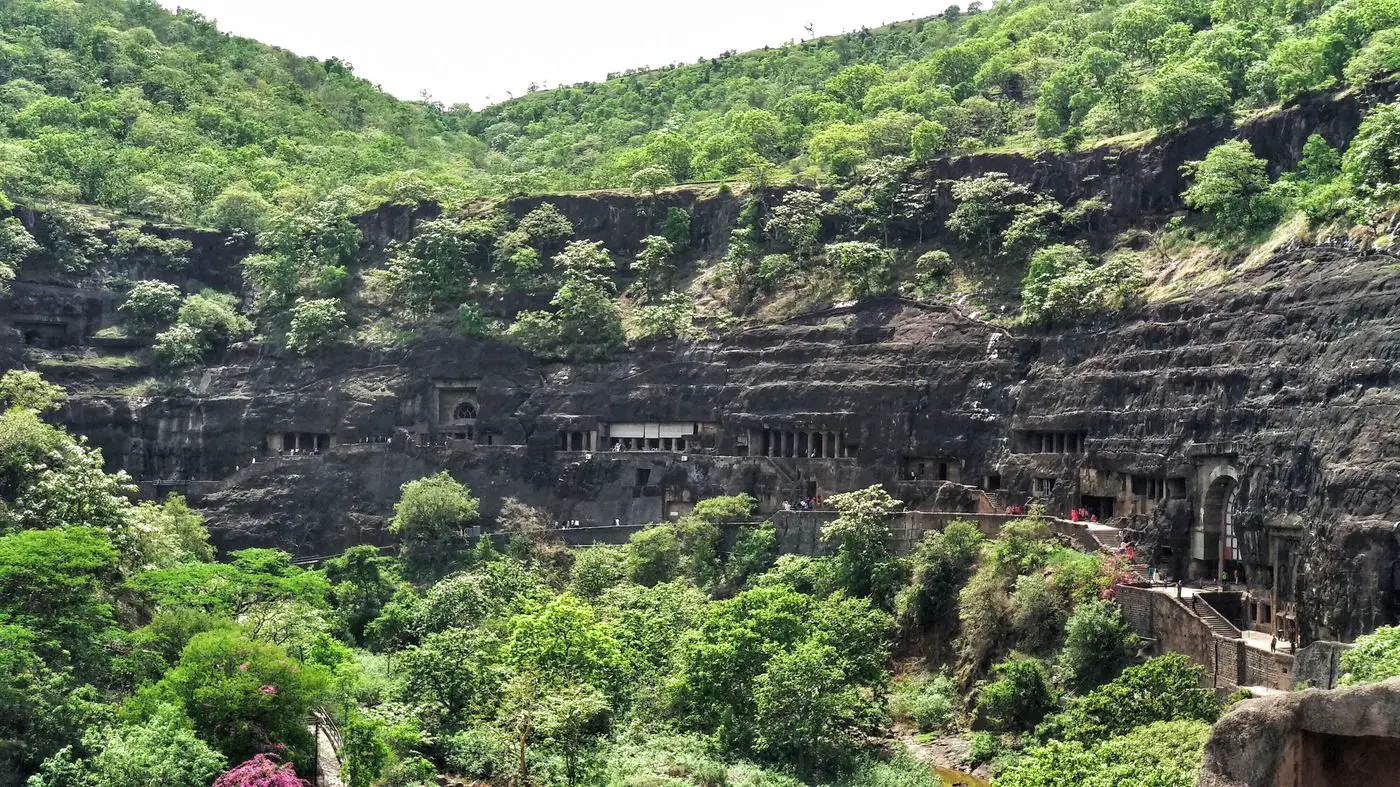
Ajanta Entrance View
Towards my left, there were lush green mountains and on the right side the caves, forming a horseshoe-shape overlooking the Wangorah River.
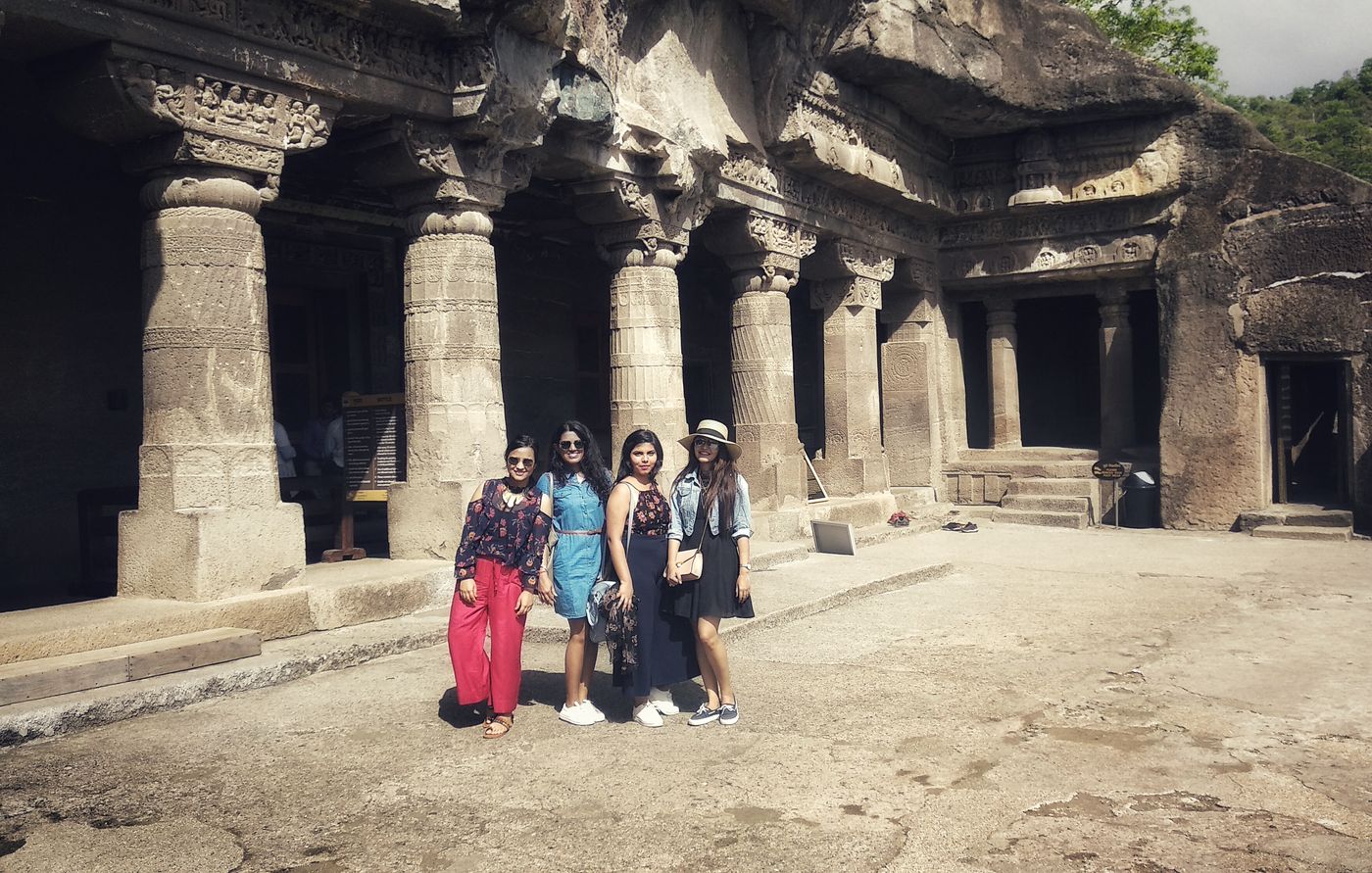
In Front Of Cave 1
Interestingly, for centuries these caves were hidden and were discovered in 1819 by a British Officer, who was on a tiger hunt. Later in 1983, it was recognized by UNESCO as the world heritage site.
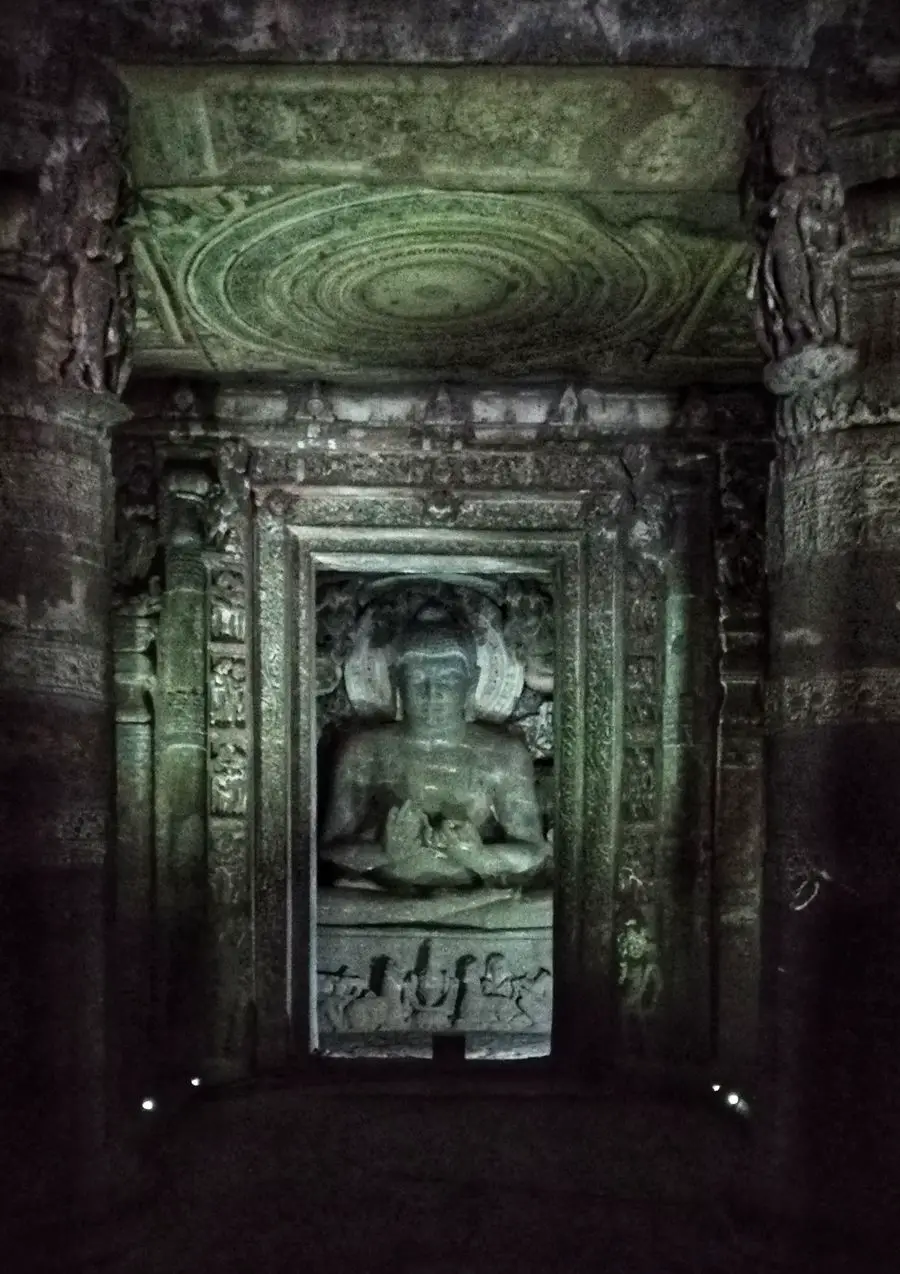
Buddha Statue At Cave No 1
The caves have sculptures, wall murals, and paintings. Despite the depreciation, you can experience the excellent craftsmanship done by the nameless artists.
The caves are engulfed in darkness, so it became very difficult to take pictures (FYI, you are not allowed to use the flashlight).
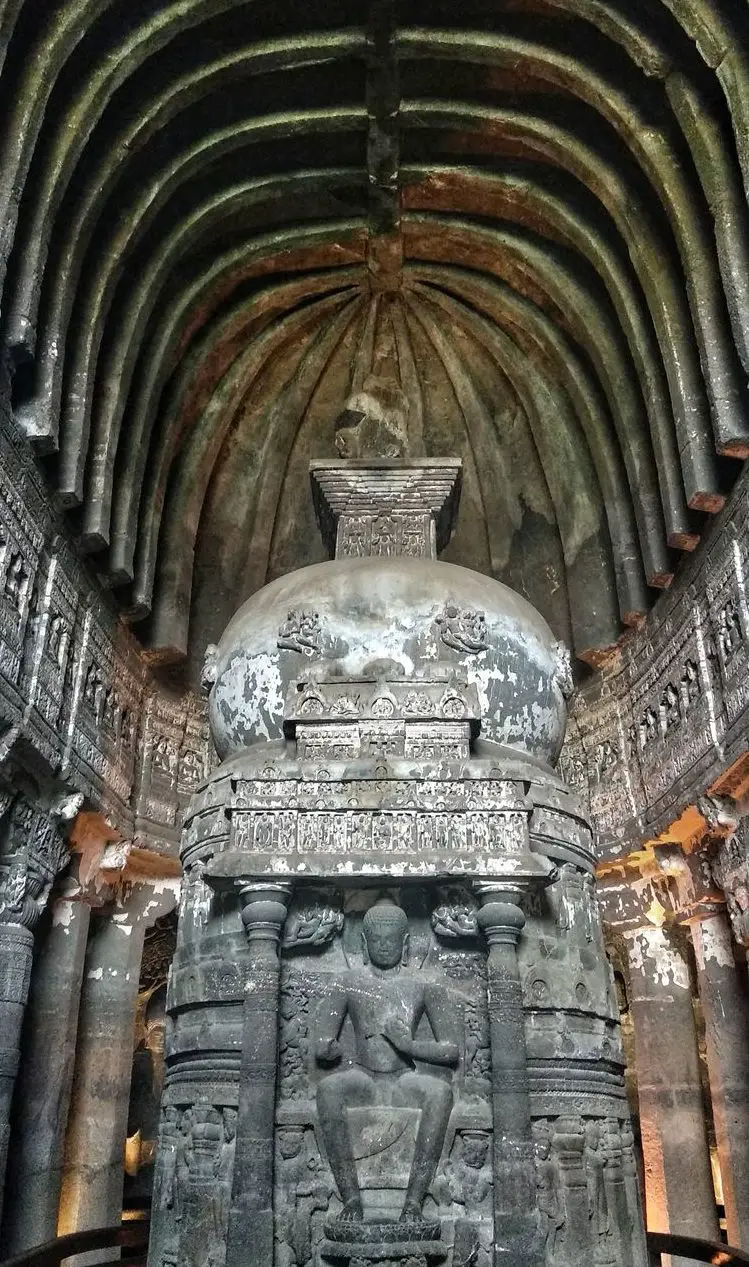
Buddha Statue
There are a few tips if you are planning to go:
1. The most significant caves are Cave 1, Cave 2, Cave 4, Cave 16, Cave 17 and Cave 26. You can skip the others.
2. Hire a guide as everything inside the cave tells a story, you will feel more connected after knowing about it. The charge is around INR 1600 for 4 caves.
3. If you are having a tight budget ask the people who work there, probably they will ask you first. Even they have sound knowledge of everything and you won’t find any difference. Pay them around 50-100 bucks per cave.
4. You have to remove shoes outside every cave, so choose your footwear accordingly.
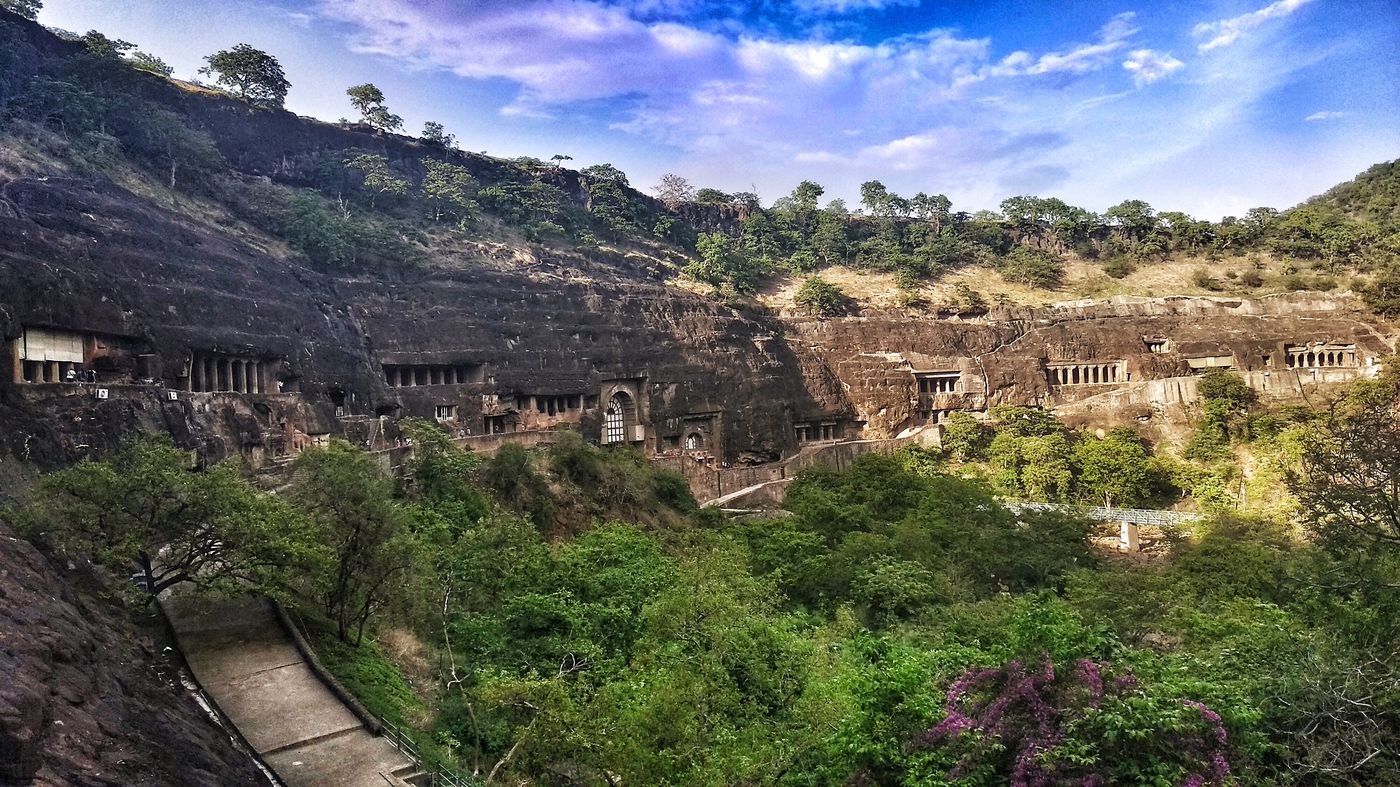
Ajanta Caves
The caves close at 5 pm and you will get the last bus to the parking lot at 6:30 pm. There are souvenir shops near the parking area, but be aware if you plan to purchase anything. The shopkeepers quote a much higher price, even we got tricked in that.
Aurangabad Itinerary Day 2:
The city has a rich heritage, surrounded by many historical monuments. The best part is the remaining attractions are nearby that can be easily covered in a day.
Daulatabad Fort
We started early at 7 am and the fort was our first stop. The fort is humongous, extending from the main gate to the hilltop that is almost 2 km walk.
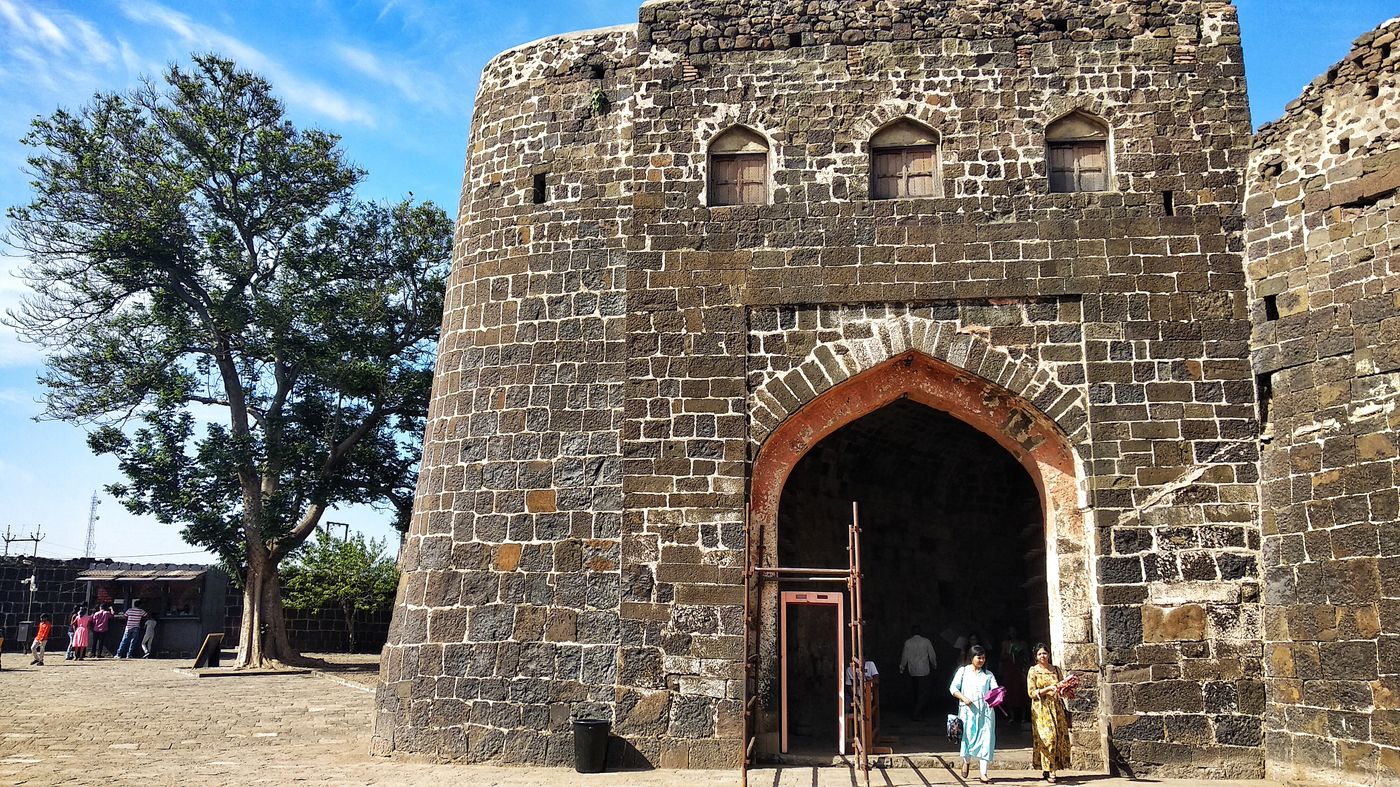
Main Entrance Of The Fort
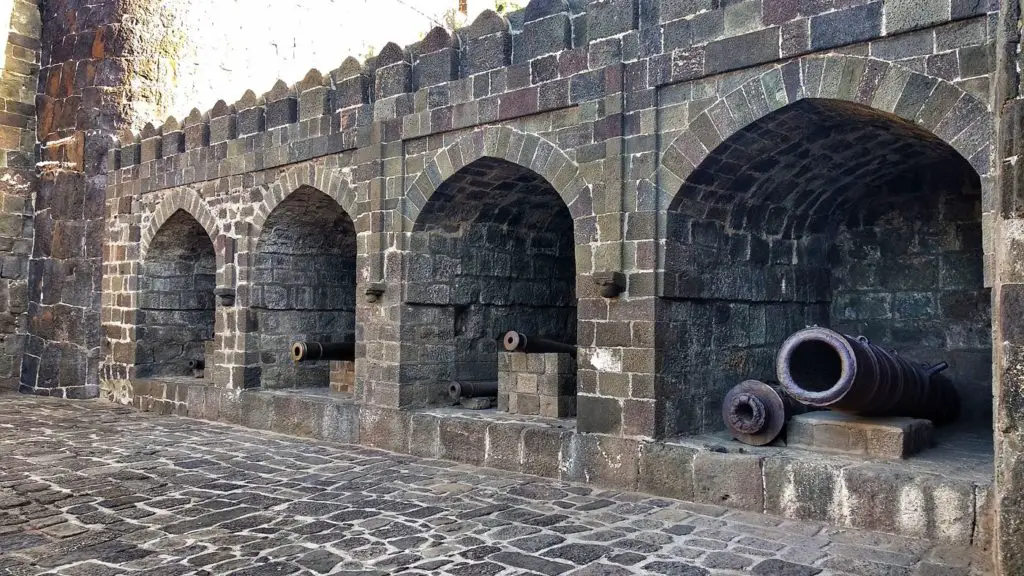
Cannons At The Entrance
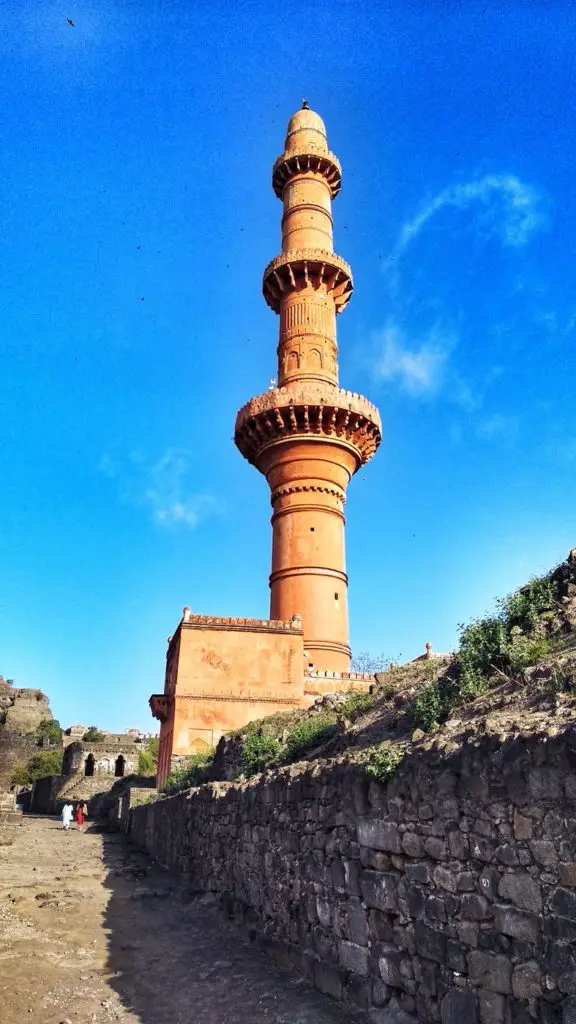
Chand Minar
Talking about its historical significance, the fort was initially constructed by a Yadavas King in the 14th century. It was considered as one of the invincible forts that were conquered only twice though many attempts have been made.
Besides the fort, there are several other notable monuments. Take a stroll around and experience the history being unfold in front of you. Don’t forget to visit the Dark Passage, that has never been conquered by the enemies. The ceiling of the dark passage is filled with bats and stinks like hell! Eww!
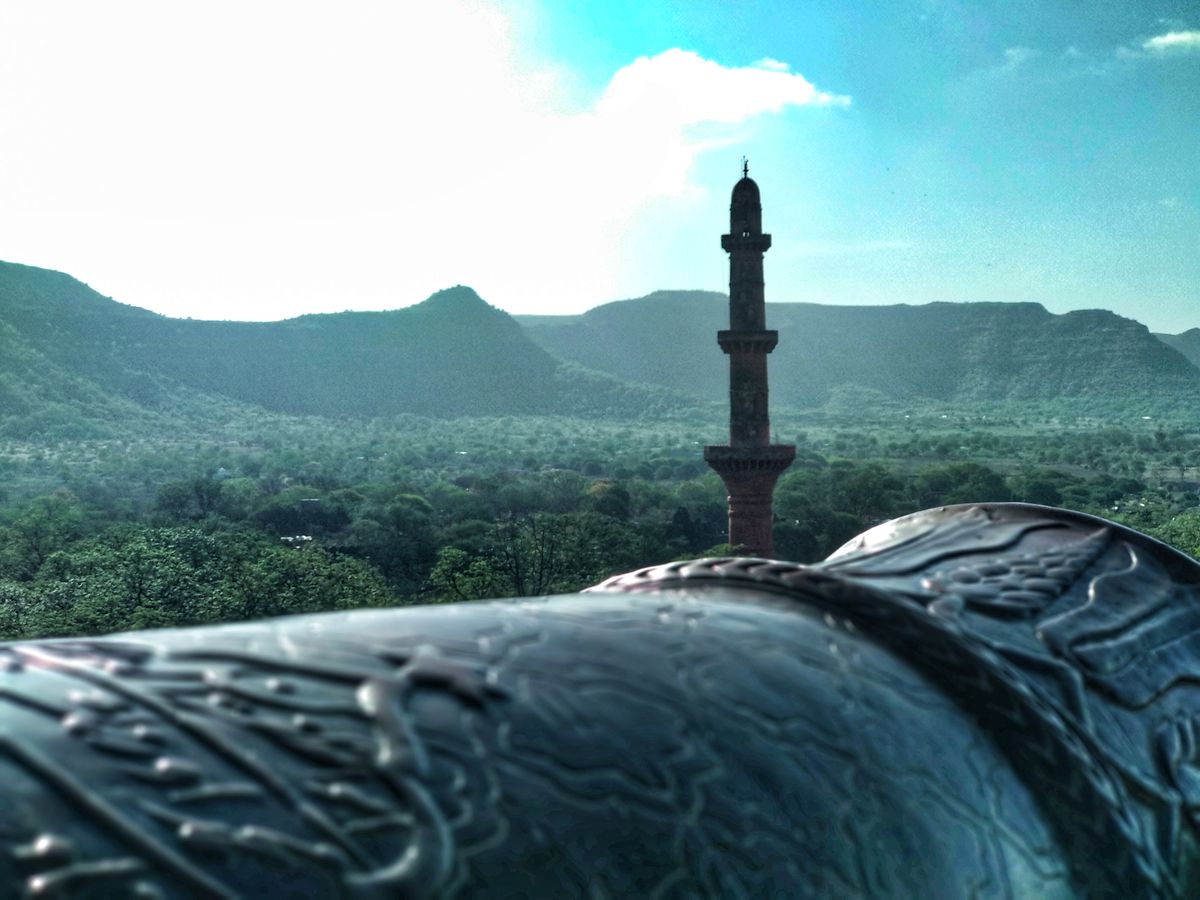
View of Chand Minar
We couldn’t make it to the top as we have to cover other places also. It takes around 2-3 hours to explore the entire fort, that includes a lot of climbs.
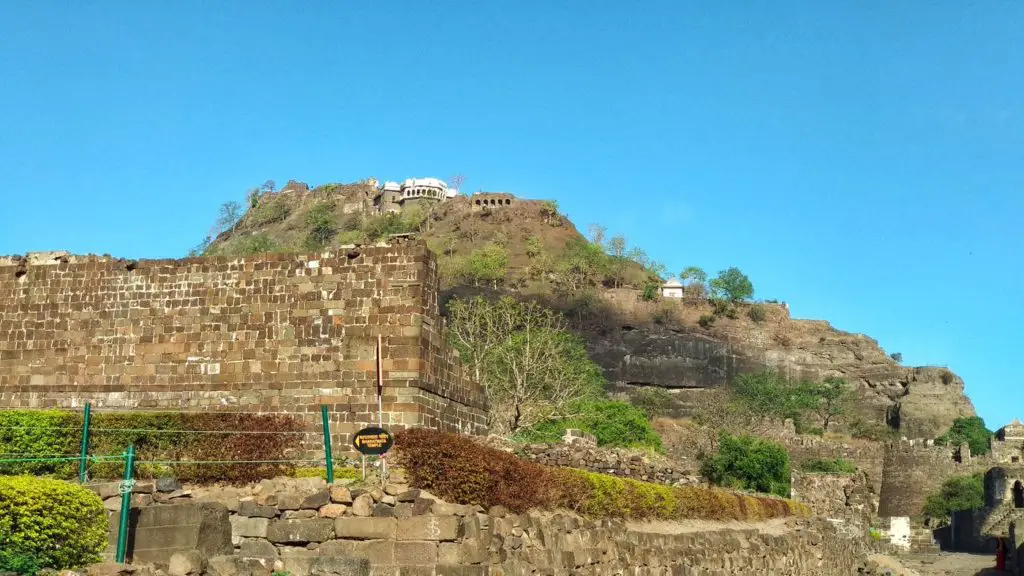
Fort At Top Of The Hill
Grishneshwar Temple
The temple is one of the 12 and the last Jyotirlinga shrines stated in the Shiva Purana. It is a pious Hindu pilgrimage dedicated to Lord Shiva. Photography is not allowed inside the temple premises.
We spent some time in the premises of the temple and left for our next destination Ellora, which is at a 5 min drive.
Ellora Caves
Unlike Ajanta Caves, these caves are spread along an area of 2km, and are a beautiful amalgamation of Hindu, Buddhism, and Jainism. We reached the Ellora caves by 12 pm and began our journey to explore the caves.
There are total 34 caves spread over at a distance of 2 km, in which there are 12 Buddhist caves (1-12), 17 Hindu caves (13-29) and 5 Jain caves (30-34). I did some research before hand about the caves. So if you are in a hurry you can skip other and directly head towards cave no 16 and 29.
These caves are the epitome of ancient craftsmanship, and the main attraction among these is cave no 16, the Kailasa.
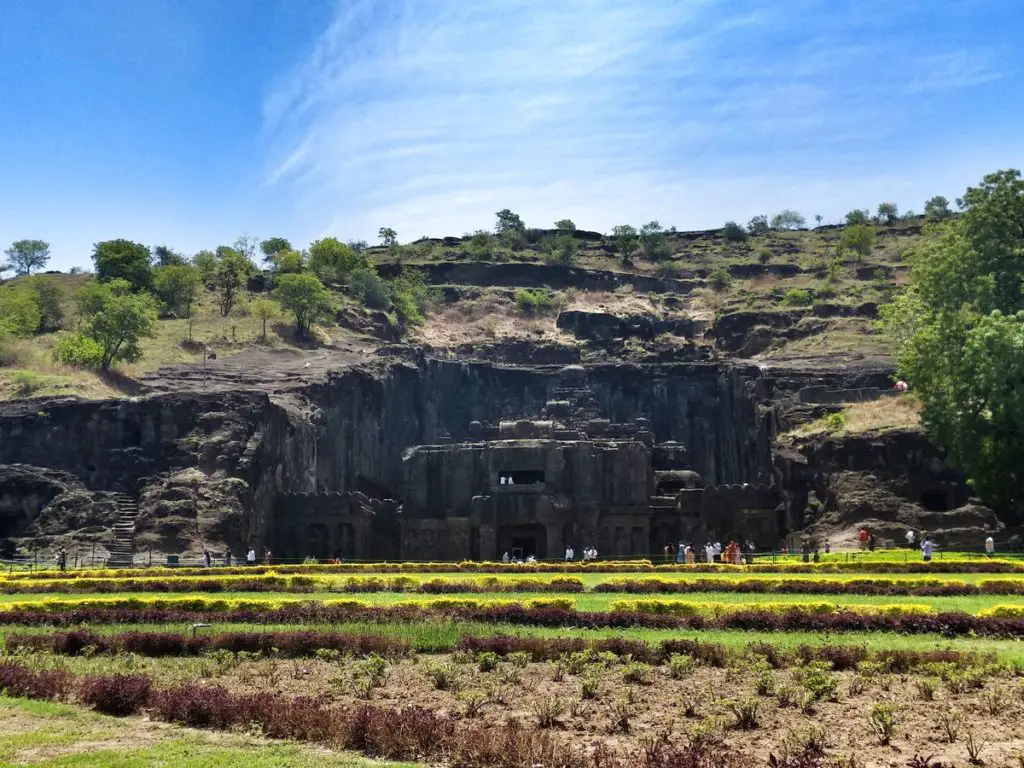
Ellora Caves
The Kailasa Temple is right in front of the entrance gate. It is a megalith carved out of one single rock, which is the largest in the world. If you are interested in historical places then you will instantly fall in love with the place.
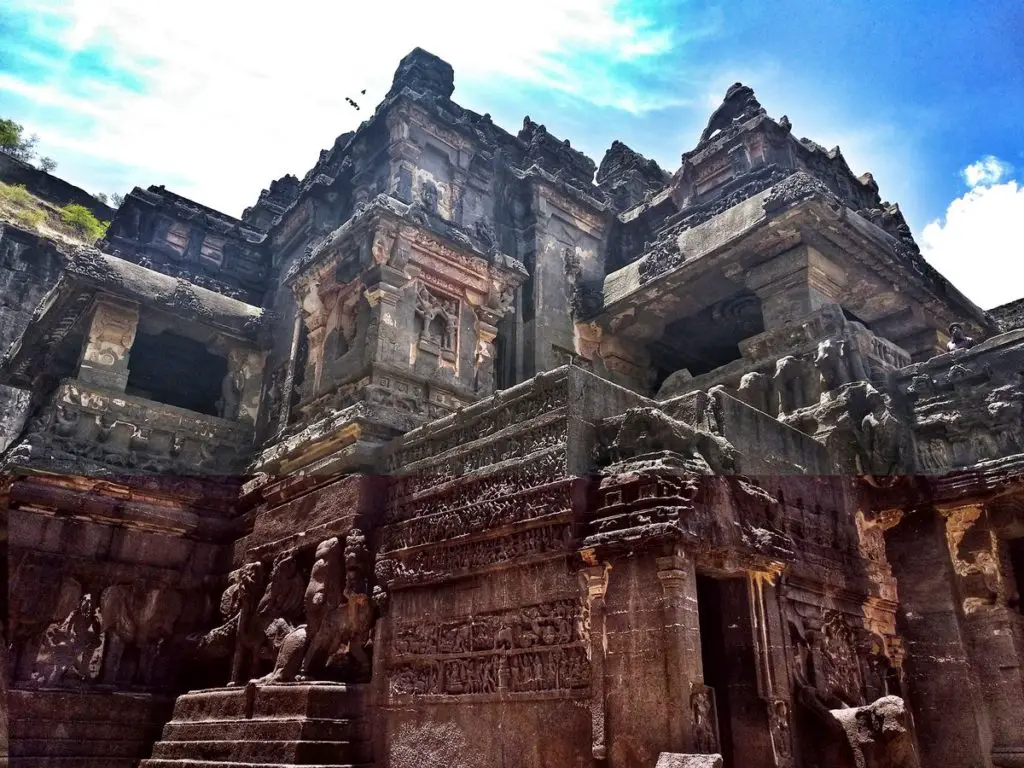
Kailasa Temple
The walls inside the cave depict the story of Mahabharata and Ramayana. The sculptures look so real that they made us think how much hard-working and dedicated our ancestors were.
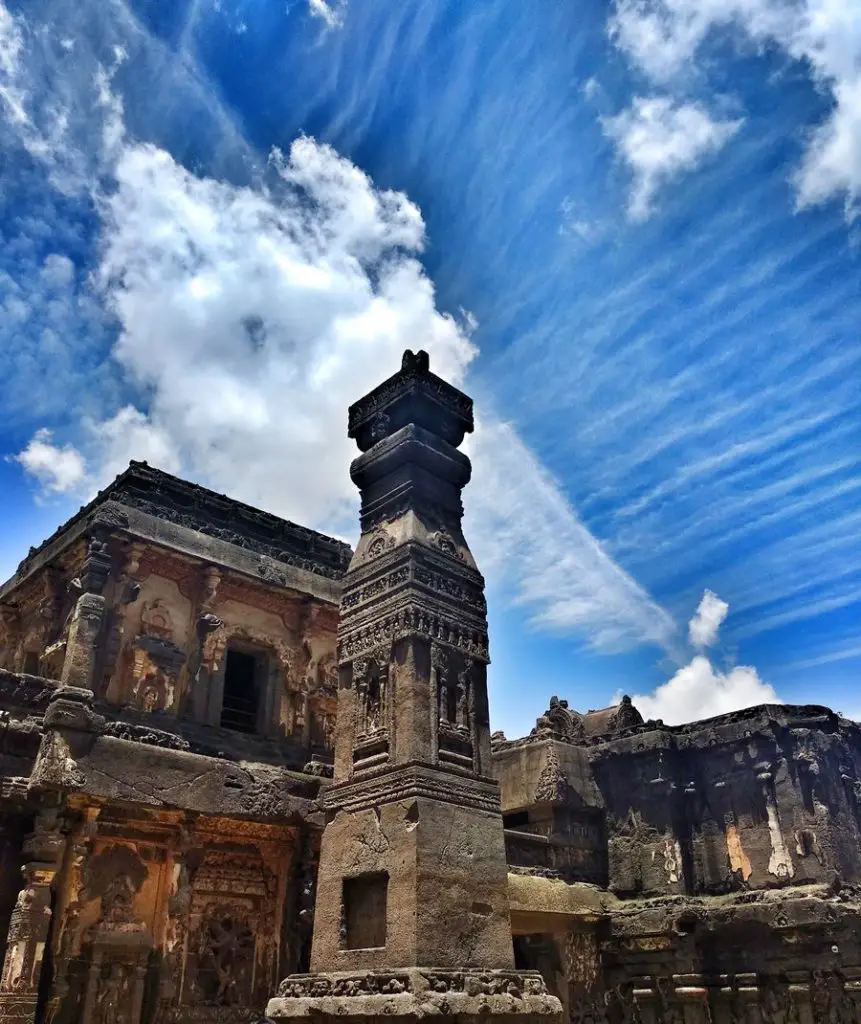
Pillar Inside Kailasa
Right outside the Kailasa Cave, we hopped on to the bus going towards Jain caves. The Jain caves are around 2 km on the left of Kailasa Cave. Those caves belong to Digambar Sect, and are smaller in size as compared to Hindu and Buddhist caves but features remarkable sculptures.
On our way back we stopped by cave no. 29, which is right in the middle of Jain Caves and Kailasa Cave. Cave 29, also known as Dhumar Lena is one of the earliest excavation and among the largest in Ellora. It is dedicated to Lord Shiva and among the several carvings, the major attractions are the celestial marriage between Shiva-Parvati and Nataraja.
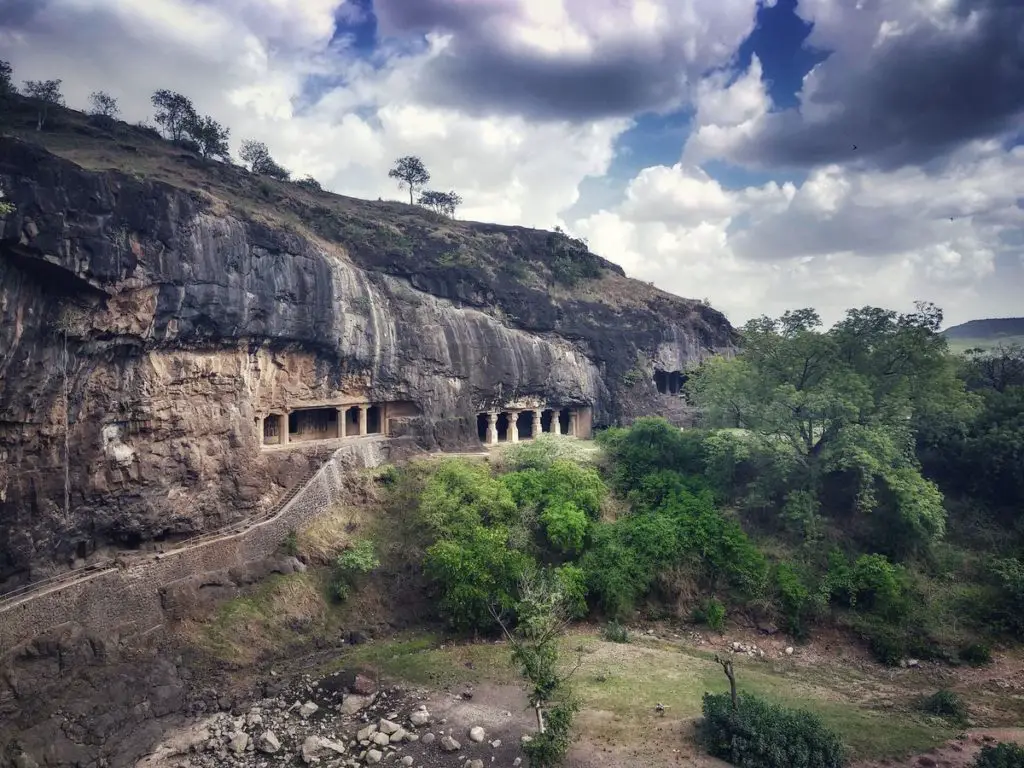
View From Cave No 29
And if you are visiting during the monsoon don’t forget to witness the natural waterfall, known as Sita Ki Nahani, that is visible from the carved balcony to the south.
Bibi Ka Maqbara
Our final destination of the trip was this tomb Bibi Ka Maqbara, that bears a striking resemblance to the famous Taj Mahal. So, unlike Taj Mahal, this mausoleum was built by Aurangzeb’s son, Azam Shah in honor of his mother. While he was highly impressed by the Taj and built a monument just like Taj, his father Aurangzeb wasn’t interested in constructing this mausoleum. So, he didn’t allow his son to spend oodles of money that result in a poor imitation of the former structure.
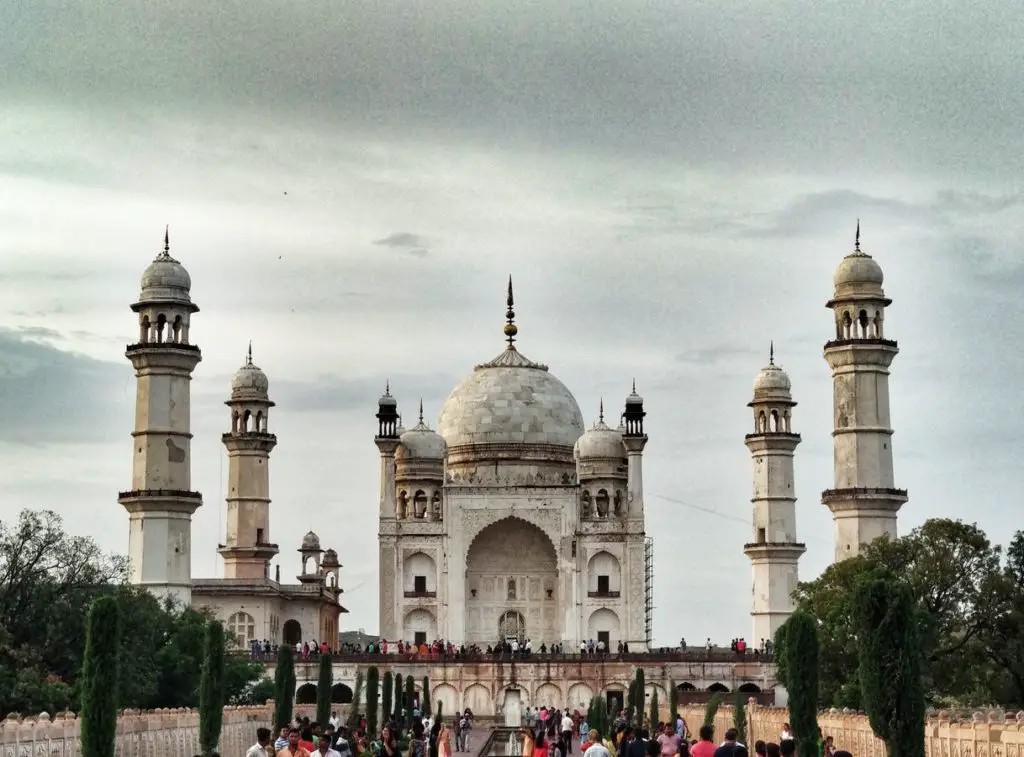
Front view of Bibi ka Maqbara
The entire layout is inspired by the Taj. The narrow walkway has a series of fountains that leads to the main entrance.
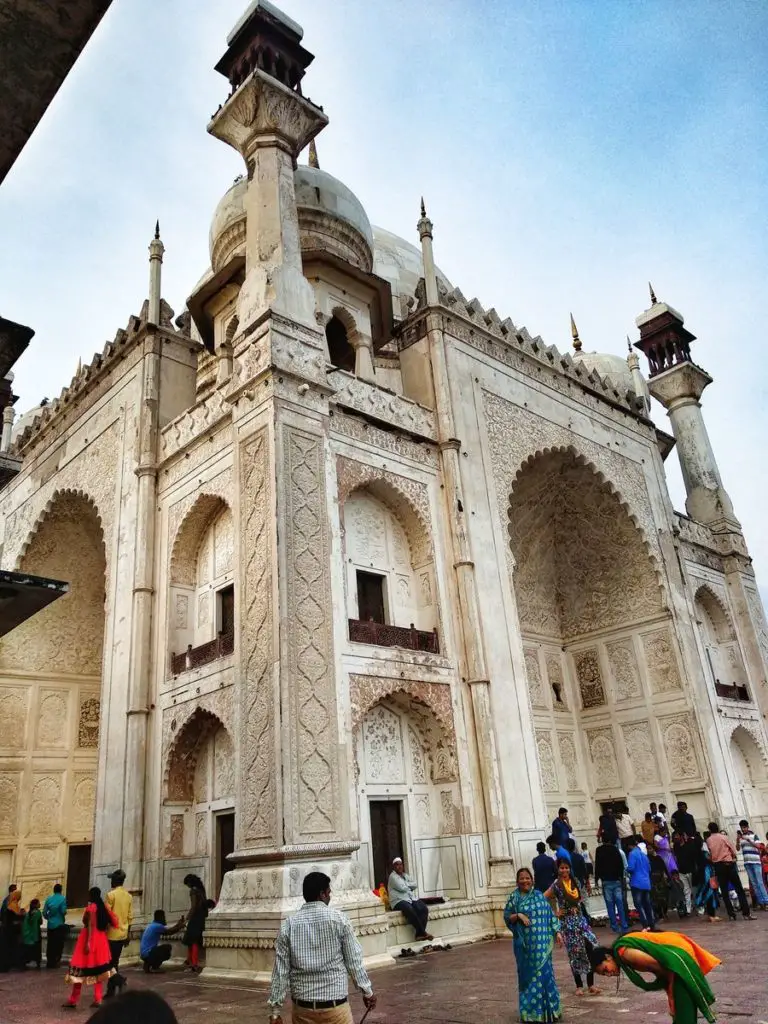
Main Entrance Of Maqbara
Further on getting close to it, I noticed that it isn’t entirely made up of marble. Only the lower portion is encased with marble, while the upper part is constructed with high-quality plaster.
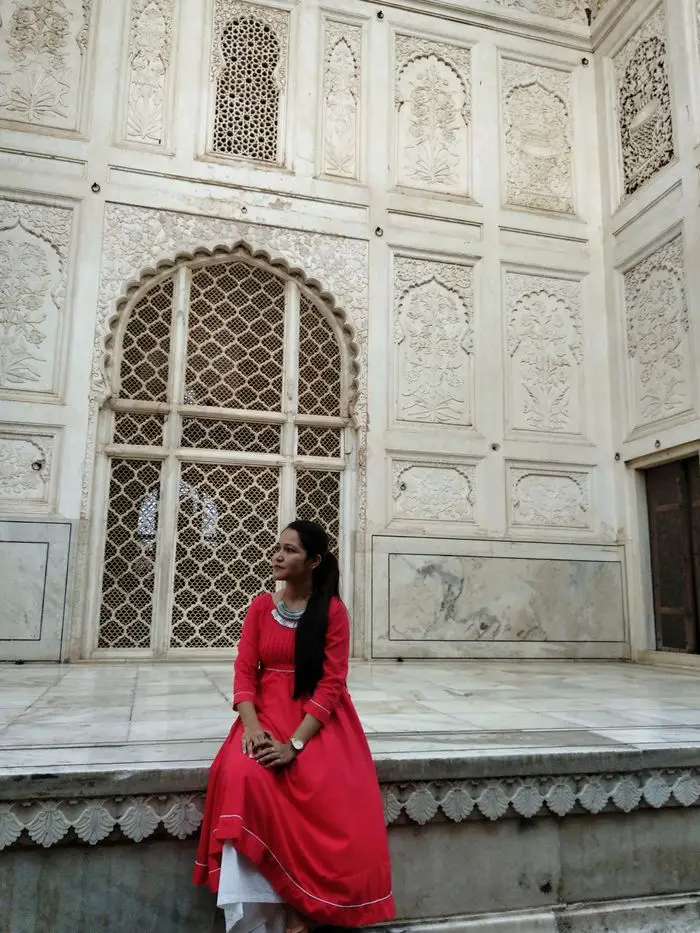
Relief Ornamentation On The Mausoleum
Few things to keep in mind if you are planning to visit the city. Do choose the hotel carefully as it is an old city and you can end up booking in a very busy or overcrowded area. Better check the location on the map. About the weather, Aurangabad is very hot in summer, so better avoid visiting at that time as you need to do a lot of walking. The best time to visit Aurangabad is soon after the monsoon.
There was a spirit of unparalleled beauty that I tried to capture in those two days. The city is historically rich that offers a vivid range of monuments, an ideal place for history lovers and photographers.
After strolling in the garden for some time we headed back to Pune. And thus came to an end a very interesting trip. So, when are you planning to visit Aurangabad and explore the caves of Ajanta Ellora?
… As always let me know your thoughts and questions in the comments below!
✓ You on Insta? 👍@triplyzer✓ Find the best offers on your Stays on 🏡 booking.com
✓ Deals on Private xfers, SIM Cards, City tours, Day trips on 🛵 GetYourGuide | on 🛵 Klook
Such a crisp yet detailed information.
Anyone planning for any trip is looking for all those information you listed.
Fascinated by the mesmerizing pictures too.
Tremendous and commendable work….
Thank you so much for a detailed review 🙂
Vow. Good work naina👍
Thanks
Wooow.Great work Naina… Keep going like this✌
Thank you
Great blog with lots of beautiful pictures.. and the bibi ka maqbara looks exactly like taj mahal .. thanks and stay safe !